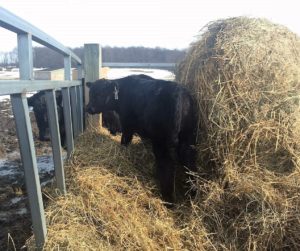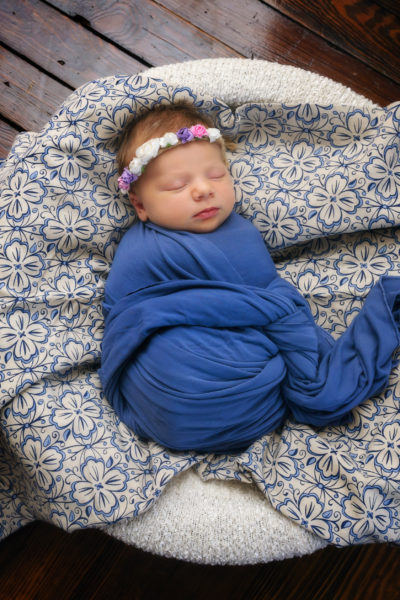My friend Lindsay from For the Love of Cattle volunteered to write a blog post about calving season on her and her husbands cow-calf beef operation. I was so excited because I love cow-calf operations and I can’t learn enough about them. Make sure you follow along on her blog and enjoy this blog post she is sharing on here today. Thanks again to Lindsay for the post and the pictures.
We are deep into calving season here on the farm and while this is always an exciting time of year it also comes with its fair share of stress and worry. Our priority is always to have healthy, happy cows and calves that thrive after calving.
During the day our pregnant mommas are out on pasture giving them lots of room to stretch their legs, lounge and eat. While we have due dates for all the ladies, just like people they rarely have their calves by the calendar so we monitor them several times a day as chores are done around the farm. Life would be a breeze if our cows could tell us, “Hey I’m in labor lets head to the calving pen”. Instead it’s up to us to pay attention and look for signs that they may be in labor. What do we look for?… Is there a cow off in a corner of the pasture by herself, is anyone holding their tail up, does anyone seem uncomfortable, do any of the cows have signs of a water bag? The signs of labor are not always obvious so it takes a trained eye and knowledge of your cow’s normal personalities/behavior to have a good handle on finding the girls that are preparing to have their babies. If we suspect a cow is in labor, we quietly bring her into a maternity pen in the barn. These pens allow us to ensure a clean, dry area for the calf to be born and it makes monitoring the cow much easier.
In a perfect world all of our cows would calve without any assistance but in some cases for the safety of both the cow and the calf we provide assistance in the birth process. If we feel a cow needs our help during calving we have several pieces of special equipment that are used to again ensure the safety of cow, calf and the farmer. The cow is put into a head gate with a gate running down along her side to keep her in a standing position. If she chooses to lay down, there is a quick release system to open the head gate so she can lie comfortably.
When we assist with the birth of a calf it is called “pulling a calf.” Specially designed calving chains (obstetrical chains) are placed on the calf’s front legs in the birth canal, this takes practice to be done properly and placement of the chains allows for tension to be applied without harming the calf. Once the chains are in place whomever the ‘mid-wife’ is that day beings to apply pressure to the chains by pulling down (or straight out if the cow is laying). Constant pressure is applied and when the cow pushes slightly more pressure will be applied, the goal is to assist the cow as she naturally pushes to be sure the calving is as easy as possible. Once the calf is born we ensure they are breathing well and then we let mom take over cleaning and stimulating that calf.
After giving cow and calf time to settle in there are a few things we do to ensure the calf gets a good start. The calf is given vaccines that provide immunity against common calf-hood diseases. We also make sure they dry quickly and in very cold weather they may be given a coat to help keep them warm until they get used to being in the world. The cow-calf pair will then spend a day or two in the barn so we can monitor that the calf is nursing well before we put them back out to pasture with the other pairs.
Since the first part of January we have had 45 calves and we have 23 pregnant mommas left to calve. Over 4 months we nearly double the number of animals on our farm which means more work to keep everyone happy and healthy. The cows take care of feeding the calves so we don’t have more mouths to feed but we need to make sure the cows have the nutrition they need for themselves and to produce milk for their calves. It also means more animals to monitor and keep track of. All the worry and added work is well worth it when we have a healthy group of calves when we wean them in late summer. Stay tuned for updates!










